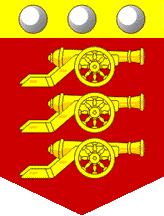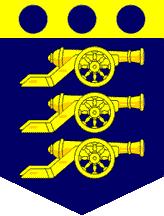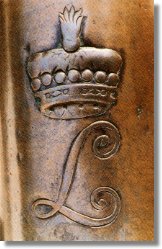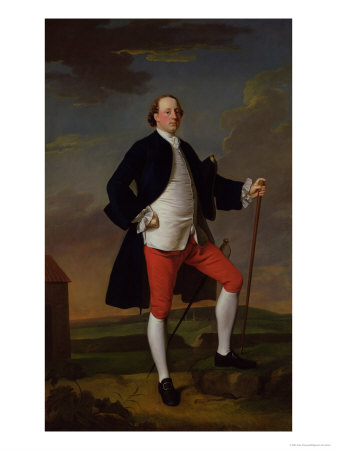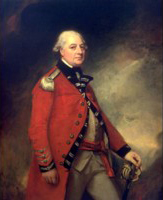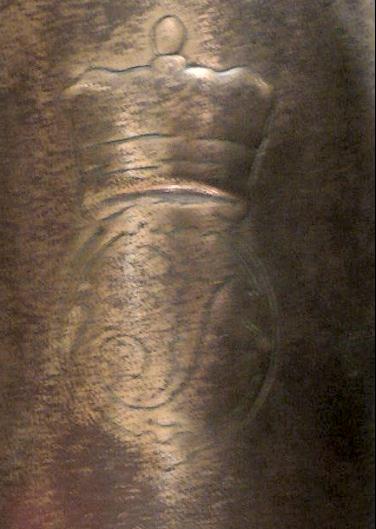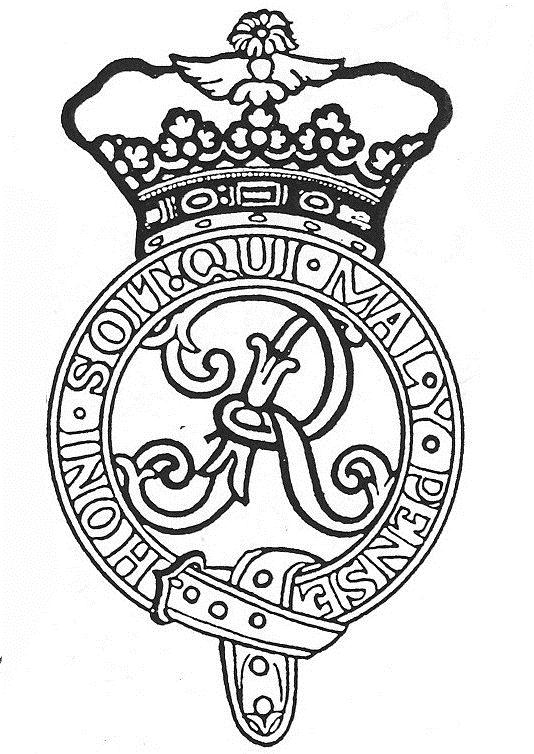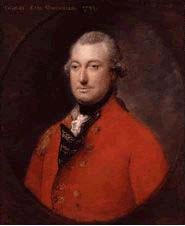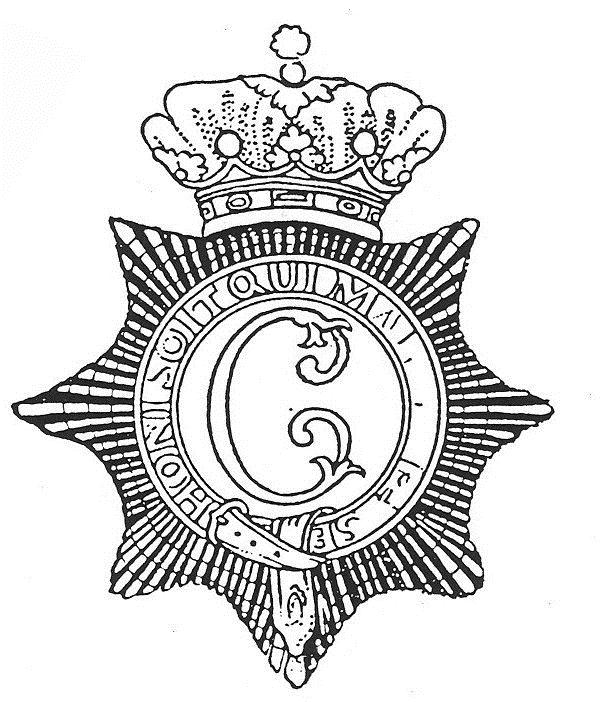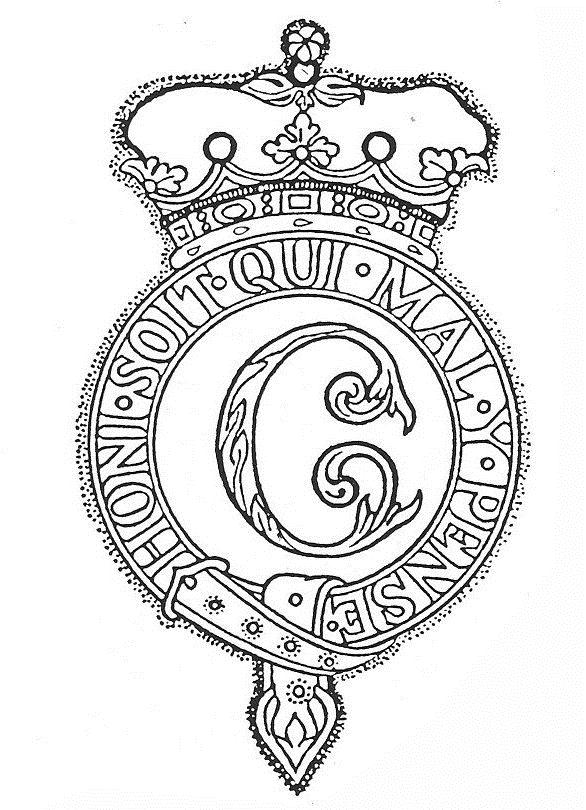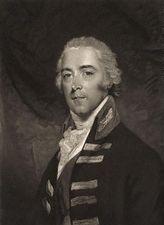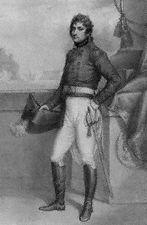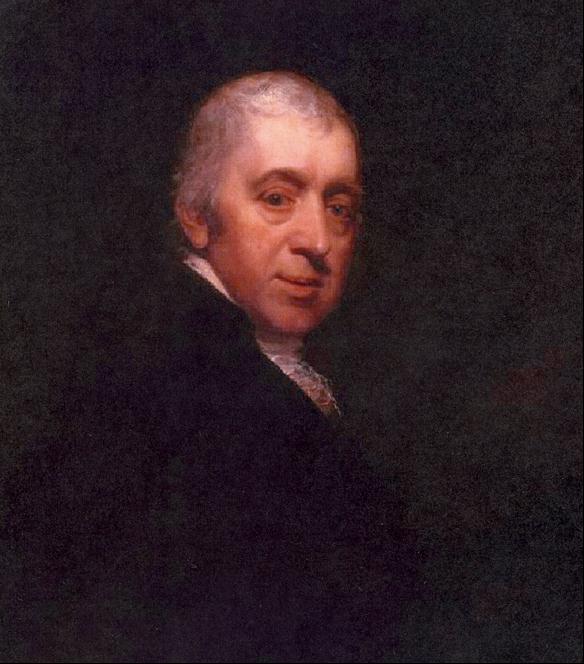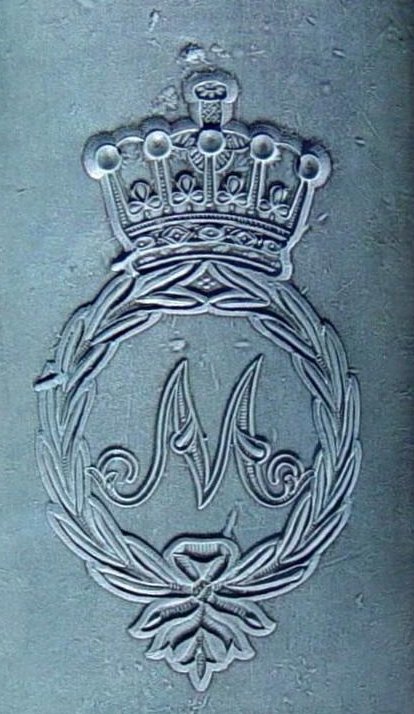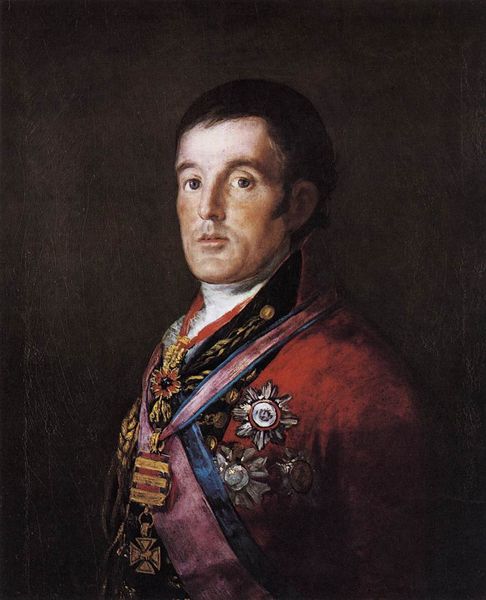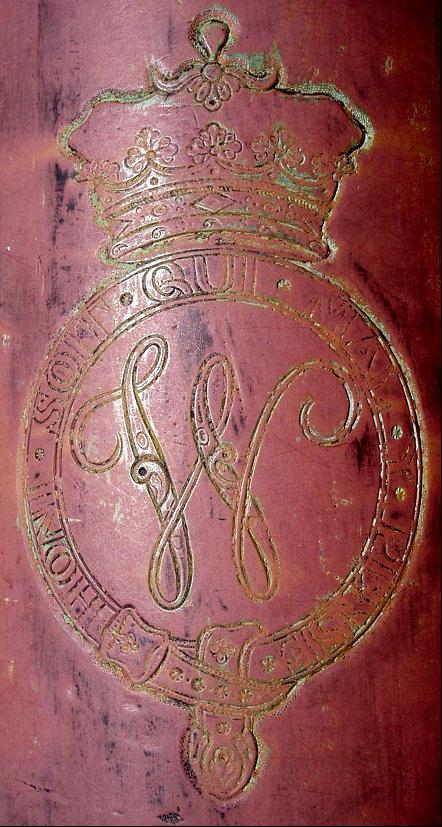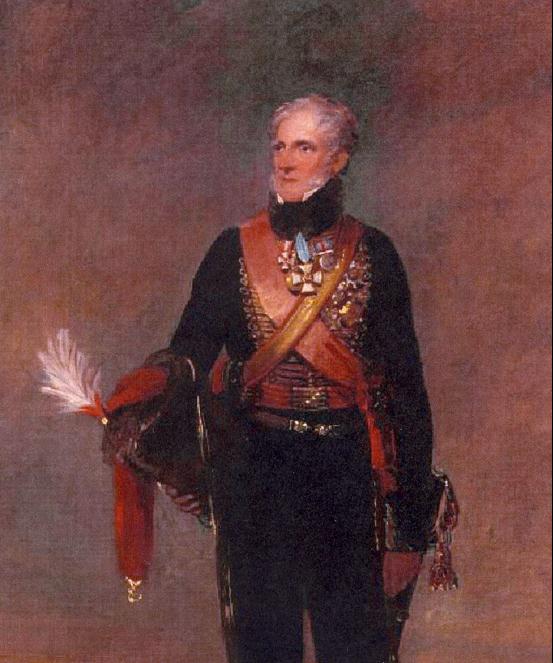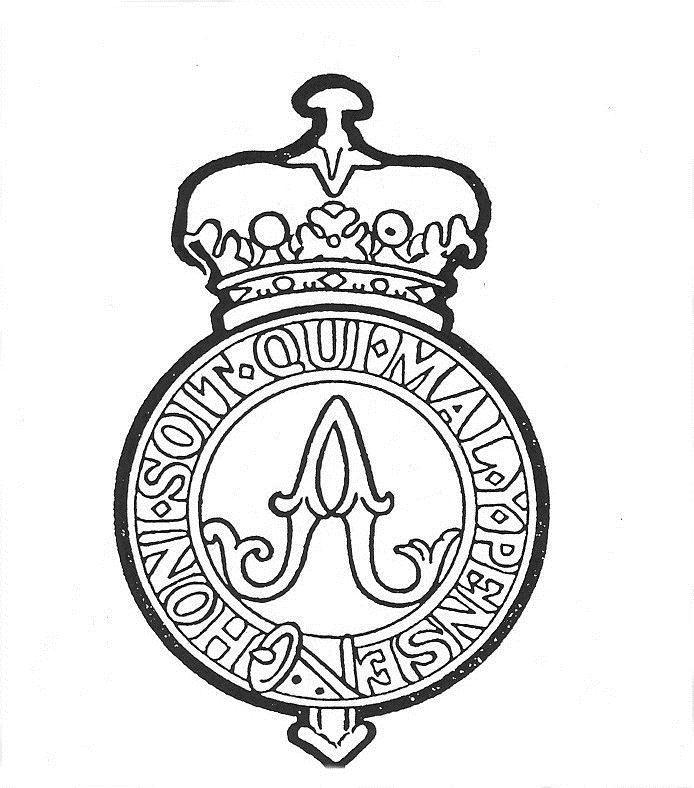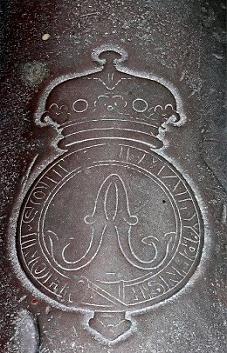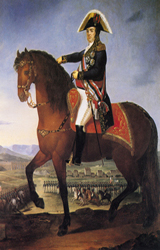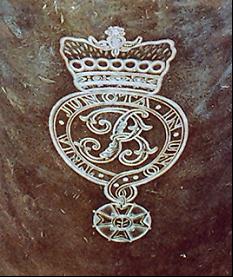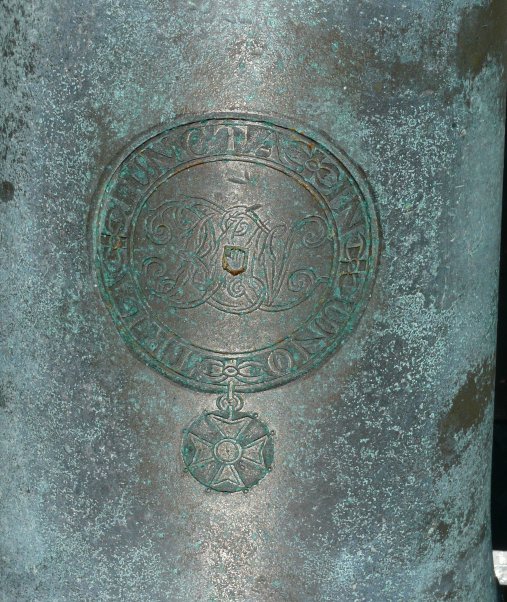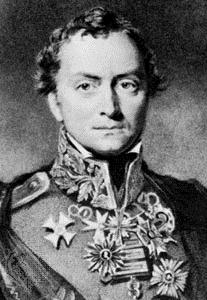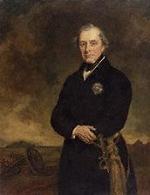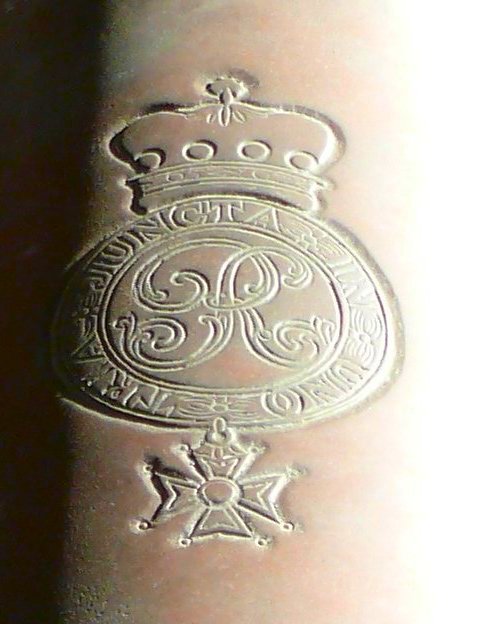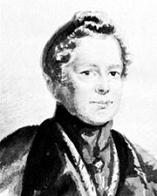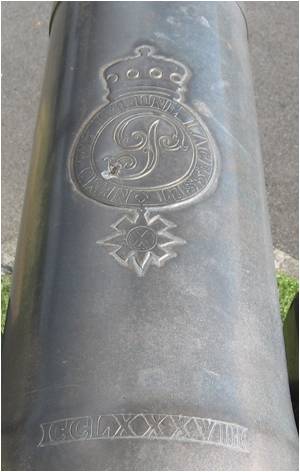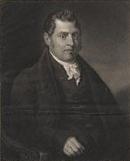| |
|
|
|
|
| ARTILLERY REGISTER |
|
THE
MASTERS GENERAL OF THE ORDNANCE
1559 - 1855 |
| |
|
|
|
|
|
|
| |
| |
For Use in identifying Insignia on Gun Barrels |
| |
|
|
|
|
Masters-General of the Ordnance, 1544–1855 |
| |
|
|
|
|
The Office of Ordnance, created by Henry VIII in 1544, became the Board of Ordnance in 1597. There was no standing army, and its principal duties were to supply guns, ammunition, stores and equipment to the King's Navy. The Great Master of Ordnance ranked immediately below the Lord High Admiral. In 1683 the Board became a Civil Department of State, under a Master General. A shield bearing three field-guns in pale, and three cannon balls in chief was adopted as the Seal of the Board. Being a metal die it was colourless, but paintings of the seal were made in a variety of colours.
The position of Master-General of the Ordnance (MGO) was established in 1544 and was an important British military position before 1855, when its duties were largely abolished. The position was frequently a cabinet level one, especially in the late 18th and early 19th centuries. The Board of Ordnance, which had its headquarters in the Tower of London, was abolished in 1855, but the title of Master-General still exists as the title of the fourth military member of the British Army Board, who oversees procurement and research and development and usually holds the rank of Lieutenant-General. Usually held by a serving General, the Master-General of the Ordnance was responsible for all British artillery, engineers, fortifications, military supplies, and much else, and was not subordinate to the Commander in Chief, the titular head of the British military. The following is a list on Master Generals of the Ordnance from 1759 to 1855:
- John Liqonier, 1st Viscount Liqonier 1759–1763
- John Manners, Marquess of Granby 1763–1770
- vacant 1770–1772
- George Townshend, 4th Viscount Townshend 1772–1782
- Charles Lennox, 3rd Duke of Richmond 1782–1783
- George Townshend, 4th Viscount Townshend 1783–1784
- Charles Lennox, 3rd Duke of Richmond 1784–1795
- Charles Cornwallis, 1st Marquess Cornwallis 1795–1801
- John Pitt, 2nd Earl of Chatham 1801–1806
- Francis Rawdon Hastings, 2nd Earl of Moira 1806–1807
- John Pitt, 2nd Earl of Chatham 1807–1810
- Henry Phipps, 1st Earl of Mulgrave 1810–1819
- Arthur Wellesley, 1st Duke of Wellington 1819–1827
- Henry William Paget, 1st Marquess of Anglesey 1827–1828
- William Carr Beresford, 1st Viscound Beresford 1828–1830
- Sir James Kempt 1830–1834
- Sir George Murray 1834–1835
- Sir Richard Hussey Vivian, 1st Bt. 1835–1841
- Sir George Murray 1841–1846
- Henry William Paget, 1st Marquess of Anglesey 1846–1852
- Henry Hardinge, 1st Viscount Hardinge 1852
- Fitzroy James Henry Somerset, 1st Baron Reglan 1852–1855
- Fox Maule-Ramsay, Lord Panmure, KT, GCB, PC Secretary of State for War 1855 - 1858
- Major General Jonathan Peel Secretary of State for War 1858 - 1859 and 1866 - 1867
|
| |
Field Marshal John (Jean Louis) Ligonier, 1st Earl Ligonier
Master General of the Ordnance 1759-1763 |
|
| |
|
|
|
|
Field Marshal John (Jean Louis) Ligonier, 1st Earl Ligonier, KB, PC - 7 November 1680 - 28 April 1770 |
| |
|
|
|
|
Field Marshal John (Jean Louis) Ligonier, 1st Earl Ligonier, was a British military officer. He was born to a Huguenot family of Castres in the south of France, and who emigrated to England at the close of the 17th century.
He entered the army as a volunteer under the Duke of Marlborough. From 1702 to 1710 he was engaged, with distinction, in nearly every important battle and siege of the War of the Spanish Succession. He was one of the first to mount the breach at the siege of Liège, commanded a company at the battles of Schellenberg and Blenheim, and was present at Menin (where he led the storming of the covered way), Ramillies, Oudenarde and Malplaquet (where he received twenty-three bullets through his clothing and remained unhurt). In 1712, he became governor of Fort St. Philip, Minorca, and in 1718 was adjutant-general of the troops employed in the Vigo expedition, where he led the stormers of Fort Mann.
Two years later he became colonel of the Black Horse (now 7th Dragoon Guards), a command which he retained for 29 years. His regiment soon attained an extraordinary degree of efficiency. He was made a brigadier general in 1735, major general in 1739, and accompanied Lord Stair in the Rhine Campaign of 1742-1743. George II made him a Knight of the Bath on the field of Dettingen. At Fontenoy, Ligonier commanded the British foot, and acted throughout the battle as adviser to the Duke of Cumberland.
During the Forty-Five he was called home to command the British army in the Midlands, but in January 1746 was placed at the head of the British and British-paid contingents of the Allied army in the Low Countries. He was present at Roucoux (11 October 1746), and, as general of horse, at Val (1 July 1747), where he led the last charge of the British cavalry. In this encounter his horse was killed, and he was taken prisoner, but was exchanged in a few days. With the close of the campaign ended Ligonier's active career, but (with a brief interval in 1756-1757) he occupied various high civil and military posts to the close of his life.
In 1757 he was made, in rapid succession, commander-in-chief, colonel of the 1st Foot Guards (now Grenadier Guards), and a peer of Ireland under the title of Viscount Ligonier of Enniskillen, a title changed in 1762 for that of Clonmell. From 1759 to 1762 he was master-general of the Ordnance, and in 1763 he became Baron, and in 1766 Earl, in the British peerage. In the latter year he became field marshal.
He spent his later years at Cobham Park in Cobham, Surrey, where the unmarried Earl boasted a harem of young girls. Ligonier died aged 89, is buried in Cobham Church and has a memorial in Westminster Abbey. |
| |
|
|
|
|
 |
| |
|
|
|
|
General John Manners, Marquess of Granby
Master General of the Ordnance 1763–1770 |
| |
|
|
|
|
|
| |
|
|
|
|
| General John Manners, Marquess of Granby PC 2 January 1721 - 18 October 1770
|
| |
|
|
|
|
General John Manners, Marquess of Granby was the eldest son of the 3rd Duke of Rutland. As he did not outlive his father, he was known by his father's subsidiary title, Marquess of Granby.
He was educated at Eton and Trinity College, Cambridge, and was returned as Member of Parliament for the family borough of Grantham in 1741. He received a commission as colonel of a regiment raised in and about Leicester to assist in quelling the Highland revolt of 1745. Very soon his regiment was disbanded, but he retained his rank and campaigned in Flanders in 1747.
During this period of his life, he acquired a reputation principally as a free-spending, gambling, sporting man. He married Lady Frances Seymour (1728–1761), daughter of Charles Seymour, 6th Duke of Somerset on 3 September 1750. They had six children:
He was promoted major-general in 1755, and was made Colonel of the Blues in 1758. That same year Granby commanded a brigade in the British contingent to Germany. He succeeded as second-in-command of the expedition in October, and was promoted lieutenant-general in February 1759. Minden was Granby's first great battle. Granby succeeded to the command of the British contingent in Ferdinand's army, having 32,000 men under his orders at the beginning of 1760.
In the remaining campaigns of the Seven Years' War the English contingent was more conspicuous by its conduct than the Prussians themselves. On 31 July 1760 Granby brilliantly stormed Warburg at the head of the British cavalry, capturing 1500 men and ten pieces of artillery.
While an excellent field commander, Granby lacked administrative skills, and he badly mismanaged the commissariat during the winter campaign of 1760–1761. However, the public at large took little note of his administrative incapacities, and he was lionized both for his victories and his concern for his soldiers. He was appointed Master-General of the Ordnance on 1 July 1763.
Under the Chatham Ministry, Granby was appointed commander-in-chief on 13 August 1766. On 9 January 1770 he resigned as commander-in-chief and master-general of the ordnance, retaining only the colonelcy of the Blues. He died on 18 October 1770 from a seizure precipitated by "gout in the stomach". He had been made a privy councillor in 1760, Lord Lieutenant of Derbyshire in 1764, and LL.D. of Cambridge in 1769.
Anyone able to assist with providing an image of General John Manners' Cypher for use on the website should contact the Gun Register member. |
| |
|
|
|
|
 |
| |
|
|
|
|
Field Marshal George Townshend, 4th Viscount Townshend
Master General of the Ordnance 1772–1782 and 1783–1784 |
| |
|
|
|
|
| |
|
|
|
| |
George Townshend, 1st Marquess Townshend PC - 28 February 1724 - 14 September 1807 |
| |
|
|
|
| |
George Townshend, 1st Marquess Townshend, known as the Viscount Townshend from 1764 to 1787, was the son of Charles Townshend, 3rd Viscount Townshend, and Audrey Ethelreda Harrison.
He served as a brigadier in Quebec, under General James Wolfe; when the latter died, and his second-in-command (Robert Monckton) was wounded, Townshend took command of the British forces during the siege of Quebec. He received Quebec City's surrender on September 18, 1759. He was promoted major general on March 6, 1761 and fought at the Battle of Villinghausen.
In 1762 he took command of a division of the Anglo-Portuguese army with the local rank of lieutenant-general, against the Spanish invasion of Portugal. No important operations took place here before the conclusion of peace.
He served as Lord Lieutenant of Ireland from 1767–1772. In 1779, Fort Townshend, was begun by Governor Richard Edwards, naming it after Townshend, who was then Master-General of the Ordnance (1772–1782 and 1783–1784) and responsible for the construction of fortifications. The Fort includes the Government House of Newfoundland and Labrador. On 2 February 1773 he fought a duel with Charles Coote, 1st Earl of Bellomont, badly wounding the Earl with a bullet in the groin.
Townshend was promoted to general in 1782, and elevated to the marquessate in 1787. He became a field marshal on July 30, 1796.
On 19 December 1751, Townshend had married Charlotte Compton, 15th Baroness Ferrers of Chartley (d. 1770), daughter of James Compton, 5th Earl of Northampton. They had eight children. |
| |
|
|
|
| |
 |
| |
|
|
|
| |
General Charles Lennox, 3rd Duke of Richmond and Lennox
Master General of the Ordnance 1782–1783 and 1784–1795 |
| |
|
|
|
| |
|
| |
|
|
|
| |
Charles Lennox, 3rd Duke of Richmondand Lennox, KG, FRS, PC 22 February 1735 - 29 December 1806 |
| |
|
|
|
| |
Charles Lennox, 3rd Duke of Richmond and Lennox, is noteworthy for his advanced views on the issue of parliamentary reform.
Charles Lennox was educated at Westminster School and succeeded his father to the peerage in 1750.. He was admitted a Fellow of the Royal Society on 11 December 1755. From 1756 to 1758 Charles Lennox was the Colonel of the 33rd Regiment of Foot. In 1757 a second battalion (2nd/33rd) had been raised and in 1758 this battalion became an independent regiment, the 72nd Regiment of Foot and Charles Lennox was appointed Colonel. The 72nd Regiment was disbanded in 1763 at the end of the Seven Years' War.
He was appointed British ambassador extraordinary in Paris in 1765, and in the following year he became a secretary of state in the Rockingham Whig administration, resigning office on the accession to power of the Earl of Chatham. In the debates on the policy that led to the War of American Independence Richmond was a firm supporter of the colonists; and he initiated the debate in 1778 calling for the removal of the troops from America, during which Chatham was seized by his fatal illness. He also advocated a policy of concession in Ireland. In 1779 the Duke brought forward a motion for retrenchment of the civil list; and in 1780 he embodied in a bill his proposals for parliamentary reform, which included manhood suffrage, annual parliaments and equal electoral areas.
Richmond sat in Rockingham's second cabinet as Master-General of the Ordnance; and in 1784 he joined the ministry of William Pitt. In 1802 he opened the family seat at Goodwood to horseracing. More than two hundred years later, Goodwood has grown to be a world-renowned racecourse. Leaving no legitimate children, he was succeeded in the peerage by his nephew Charles, son of his brother, General Lord George Henry Lennox. The adjoining towns of Richmond and Lenox in Massachusettswere named in his honour. |
| |
|
|
|
| |
 |
| |
|
|
|
| |
General Charles Cornwallis, 1st Marquess Cornwallis
Master General of the Ordnance 1795–1801 |
| |
|
|
|
| |
|
| |
|
| |
|
|
|
| |
Charles Cornwallis, 1st Marquess Cornwallis 31 December 1738 - 5 October 1805
|
| |
|
|
|
| |
Charles Cornwallis, 1st Marquess Cornwallis was a British military commander and colonial governor. In the United States, he is best remembered as one of the leading British generals in the American Revolutionary War. In India, where he served two terms as governor general, he is remembered for promulgating the Permanent Settlement. As Lord Lieutenant of Ireland, he argued for Catholic emancipation.
Charles Cornwallis the eldest son of Charles Cornwallis, 5th Baron Cornwallis (later 1st Earl Cornwallis) and Elizabeth Townshend the daughter of the 2nd Viscount Townshend and a niece of the Prime Minister, Sir Robert Walpole was born at Grosvenor Square in London, England. Educated at Eton College and Clare College, Cambridge he obtained his first commission as Ensign in the 1st Foot Guards, on December 8, 1757. He also became a Member of Parliament in January 1760. He succeeded his father as 2nd Earl Cornwallis in 1762.
Throughout the Seven Years' War, Lord Cornwallis served four terms in different posts in Germany. Cornwallis' participation in the American revolution began with his service as second in command to Henry Clinton in May 1776. He fought with distinction in the Battle of Long Island. When Washington launched his surprise attack on Trenton Cornwallis was ordered to take command of the forces stationed in the Trenton area. In November, 1778 Cornwallis returned to England to be with his ailing wife, Jemima, who died in February 1779.
Cornwallis returned to America in July, 1779, where he was to play a central role as British commander in the Southern Campaign. His 1781 defeat by a combined American-French force at the Siege of Yorktown is generally considered the end of the war.His tactics in America were excessively criticised by his political enemies in London but he retained the confidence of King George III.
In 1786 he was appointed Governor General and Commander In Chief in India. He instituted land reforms and reorganized the British army and administration. He was created Marquess Cornwallis in 1792 and returned to England the following year.
Cornwallis was made Lord Lieutenant of Ireland in June 1798, after the outbreak of the Irish Rebellion of 1798. He oversaw the defeat of both the Irish rebels and a French invasion force in August 1798.
He was reappointed Governor General of India in 1805, but on October 5, shortly after arriving, died of a fever at Ghazipur, near Varanasi. There Cornwallis is buried overlooking the Ganges River. |
| |
|
|
|
| |
 |
| |
|
|
|
| |
General John Pitt, 2nd Earl of Chatham
Master General of the Ordnance 1801–1806 and 1807–1810 |
| |
|
|
|
| |
|
| |
|
|
|
| |
John Pitt, 2nd Earl of Chatham, KG, PC 9 October 1756 - 24 September 1835
|
| |
|
|
|
| |
John Pitt, 2nd Earl of Chatham, was the eldest son of William Pitt the Elder and an elder brother of William Pitt the Younger. He served in various capacities in the Tory cabinets of the late 18th and early 19th centuries. During the Napoleonic Wars, he commanded the British force in the Walcheren Campaign. He was Governor of Gibraltar from 1820 to 1835.
He married The Hon. Mary Townshend, daughter of the 1st Baron Sydney, on 10 July 1783. |
| |
|
|
|
| |
 |
| |
|
|
|
| |
Major General Francis Rawdon-Hastings, 2nd Earl of Moira
Master General of the Ordnance 1806–1807 |
| |
|
|
|
| |
|
| |
|
|
|
| |
Francis Rawdon-Hastings,1st Marquess of Hastings 9 December 1754 - 28 November 1826 |
| |
|
|
|
| |
Francis Rawdon-Hastings, 1st Marquess of Hastings, was born in County Down, the son of John Rawdon, 1st Earl of Moira and Elizabeth Rawdon, 13th Baroness Hastings. He joined the British Army in 1771 and served in the American Revolutionary War. There he served at the battles of Bunker Hill, Brooklyn, White Plains, Monmouth and Camden, at the attacks on Forts Washington and Clinton, and at the siege of Charleston. He succeeded his father as the 2nd Earl of Moira in 1793.
Becoming a Whig in politics, he entered government as part of the Ministry of all The Talents in 1806 as Master-General of the Ordnance, but resigned upon the fall of the ministry the next year. Through the influence of the Prince-Regent, Moira was appointed Governor-General of India in 1813. His tenure as Governor-General was a memorable one, overseeing the victory in the Gurkha War (1814 - 1816); the final conquest of the Marathas in 1818; and the purchase of the island of Singapore in 1819. He was raised to the rank of Marquess of Hastings in 1817.
Hastings' tenure in India ended due to a financial scandal in 1823, and he returned to England, being appointed Governor-General of Malta in 1824. He died at sea off Naples two years later.
On July 12, 1804, he married Flora Campbell, 6th Countess of Loudoun, daughter of Major-General James Campbell, 5th Earl of Loudoun and Lady Flora Macleod. They had five children.
Anyone able to assist with providing an image of Francis Rawdon-Hastings' Cypher for use on the website should contact the Gun Register member. |
| |
|
|
|
| |
 |
| |
|
|
|
| |
General Henry Phipps, 1st Earl of Mulgrave
Master General of the Ordnance 1810–1819 |
| |
|
|
|
| |
|
| |
|
|
|
| |
Henry Phipps, 1st Earl of Mulgrave 14 February 1755 - 7 April 1831 |
| |
|
|
|
| |
Henry Phipps, 1st Earl of Mulgrave educated at Eton College and the Middle Temple, he entered the army in 1775, and eventually rose to the rank of General. He saw service in the Caribbean during the American Revolutionary War. In 1784 Phipps was elected to the House of Commons for Totnes.
He succeeded his brother Constantine John Phipps as Baron Mulgrave in the Peerage of Ireland in 1792. In 1794 he was granted a British peerage as Baron Mulgrave, entering the House of Lords. He held the
office of Chancellor of the Duchy of Lancaster (1804–1805) and appointed Foreign Secretary. After 1807, Mulgrave served in various major offices, first as First Lord of the Admiralty (1807–1810), then as Master-General of the Ordnance (1810–1819), and finally as Minister without Portfolio (1819–1820). As First Lord he was heavily involved in planning both the successful expedition against Copenhagen in 1807, and the disastrous one to Walcheren in 1809. After moving to the ordnance board, Mulgrave became less active politically. He was created Earl of Mulgrave in 1812. |
| |
|
|
|
| |
 |
| |
|
|
|
| |
Field Marshal Arthur Wellesley, 1st Duke of Wellington
Master General of the Ordnance 1819–1827 |
| |
|
|
|
| |
|
| |
|
|
|
| |
Field Marshal Arthur Wellesley, 1st Duke of Wellington, KG, KP, GCB, GCH, PC, FRS 1 May 1769 - 14 September 1852 |
| |
|
|
|
| |
Field Marshal Arthur Wellesley, 1st Duke of Wellington, was born in Ireland to a prominent Ascendancy family, he was commissioned an ensign in the British Armyin 1787. Serving in Ireland as aide-de-camp to two successive Lords Lieutenant of Ireland he was also elected as member of Parliament in the Irish House of Commons. A colonel by 1796, Wellesley saw action in the Netherlands and later India where he fought in the Fourth Anglo-Mysore War at the Battle of Seringapatam. He was later appointed Governor of Seringapatam and Mysore.
Wellesley soon rose to prominence as a General during the early Napoleonic Wars. In the Peninsular Campaign he led the Allied forces to victory against the French and after the Battle of Vitoria in 1813, was granted a Dukedom and promoted to the rank of Field Marshal. Serving as the ambassador to France following the exile of Napoleon, he returned to fight Napoleon's forces after the Hundred Days. This culminated at the Battle of Waterloo, which saw the defeat of the French Emperor and a decisive coalition victory.
An opponent of parliamentary reform, he was given the epithet the "Iron Duke" because of the iron shutters he had fixed to his windows to stop the pro-reform mob from breaking them. He was twice Prime Minister of the United Kingdom under the Tory party and oversaw the passage of Catholic emancipation in 1829. He continued as Prime Minister until 1830 and again served briefly in 1834. Although unable to prevent the passage of the Reform Act of 1832 he continued as one the leading figures in the House of Lords until his retirement. He remained Commander-in-Chief of the British Army until his death in 1852. |
| |
|
|
|
| |
 |
| |
|
|
|
| |
Field Marshal Henry William Paget, 1st Marquess of Anglesey
Master General of the Ordnance 1827 – 1828 and 1846–1852 |
| |
|
|
|
| |
|
| |
|
|
|
| |
Field Marshal Henry William Paget, 1st Marquess of Anglesey KG, GCB, GCH 17 May 1768 - 29 April 1854 |
| |
|
|
|
| |
Field Marshal Henry William Paget, 1st Marquess of Anglesey was a British military leader and politician, now chiefly remembered for leading the charge of the heavy cavalry against d'Erlon's column during the Battle of Waterloo.
was the eldest son of Henry Paget, 1st Earl of Uxbridge and was educated at Westminster School and Christ Church, Oxford, afterwards entering parliament in 1790 as member for Caernarvon. At the outbreak of the French Revolutionary Wars, Lord Paget (as he was then styled) raised the regiment of Staffordshire volunteers and was given the temporary rank of Lieutenant Colonel in 1793. As the 80th Foot, the corps took part in the Flanders campaign of 1794 under Paget's command.
In 1795 he was made a lieutenant-colonel of the regular army; in that same year, he married the daughter of the Earl of Jersey. In 1796 he was made a Colonel, Major General (1802) and Lieutenant General (1808). He commanded the cavalry for Sir John Moore's army during the Corunna campaign. His only war service from 1809 to 1815 was in the disastrous Walcheren expedition (1809), in which he commanded a division.
In 1810 he was divorced and then married Lady Charlotte Wellesley, who had about the same time been divorced from her husband. In 1815, he was appointed cavalry commander in Belgium and on the eve of Waterloo, Paget had his command extended by Wellington to include the whole of the allied cavalry and horse artillery. On 18 June he led the spectacular cavalry charge of the British centre, which checked and in part routed D'Erlon's corps d'armée. One of the last cannon shots fired that day hit Paget in the leg, necessitating its amputation. Five days later, the Prince Regent created him Marquess of Anglesey and made him a GCB, among other decorations from the allied sovereigns.
In 1818 the Marquess was made a Knight of the Garter, in 1819 he became full General, and at the coronation of George IV, he acted as Lord High Steward of England. In April 1827, he became a member of the Canning administration, taking the post of Master-General of the Ordnance and becoming a member of the Privy Council. Under the Wellington administration, he accepted the appointment of Lord Lieutenant of Ireland (March 1828). In July 1833, the ministry resigned over the Irish question, he spent thirteen years out of office, then joined Lord John Russell's administration in July 1846 as Master General of the Ordnance, finally retiring in March 1852 with the rank of Field Marshal and Colonel of the Royal Horse Guards. |
| |
|
|
|
| |
 |
| |
|
|
|
| |
General Sir William Carr Beresford, 1st Viscount Beresford
Master General of the Ordnance 1828 - 1830 |
| |
|
|
|
| |
|
| |
|
|
|
| |
Sir William Carr Beresford,1st Viscount Beresford, 1st Conde de Trancoso,
1st Marquês de Campo Maior GCB, GCH 2 October 1768 - 8 January 1856 |
| |
|
|
|
| |
Sir William Carr Beresford, 1st Viscount Beresford, 1st Conde de Trancoso, 1st Marquês de Campo Maior entered the British Army in 1785 as an ensign He distinguished himself at Toulon (1793), in Egypt (1799-1803) and in South Africa (1805). In 1806, without authorization from the Crown, he decided to attack Buenos Aires in Spanish South America. Despite early success the British were defeated and forced to capitulate. Bereford had to surrender, remaining prisoner for six months he managed to escape and arrived in England in 1807.
The Portuguese Government in-exile asked Britain for a commander-in-chief capable of reorganizing and disciplining the Portuguese Army and Beresford was chosen for that mission. He was appointed Marshal and Commander in Chief of the Army by Decree of March 7, 1809. Beresford quickly implemented reforms to improve the discipline and organization of the forces placed under his command.
After the very bloody Battle of Albuera the French were forced to retreat, though the siege of Badajoz had to be subsequently abandoned. On 13 May 1811, he was created 1st Conde de Trancoso in Portugal by decree of Prince Regent John. On 22 July 1812, the important Battle of Salamanca was fought, giving the Anglo-Portuguese forces a decisive victory over the French. In the battle Beresford was badly wounded, when he was ordering the advance of one of the Portuguese brigades.
He retired to Lisbon and stayed in Portugal until May of the next year (1813). He was created 1st Marquês de Campo Maior in Portugal by Prince Regent John in 1812. Beresford rejoined the campaigning army, and assisted in the battles that were fought in France and were the last clashes of the Peninsular War.
After peace was declared he went to England on leave and came back again to Lisbon to reassume the command of the Portuguese Army. In 1817 he was made Proconsul but this ended with the Revolution of 1820. As a reward for his services in the fight against the French he was created Viscount Beresford by the British Crown. He was the last titular Governor of Jersey.
He married without issue his first cousin Hon. Louisa de la Poer Beresford, widow of Henry Thomas Hope and daughter of William Beresford, 1st Baron Decies and wife Elizabeth Fitzgibbon. |
| |
|
|
|
| |
 |
| |
|
|
|
| |
General Sir James Kempt
Master General of the Ordnance 1830–1834 |
| |
|
|
|
| |
 |
| |
|
|
|
| |
General Sir James Kempt, GCB c. 1765 - 20 December 1854 |
| |
|
|
|
| |
General Sir James Kempt, GCB accompanied Sir Ralph Abercromby to Holland in 1799, and later to Egypt as an aide-de-camp. After Abercromby's death Kempt remained on his successor's staff until the end of the campaign in Egypt. In 1803 he received a lieutenant-colonelcy and at the Battle of Maida he led the light brigade which bore the heaviest share of the battle.
Employed from 1807 to 1811 on the staff in North America, Brevet-Colonel Kempt at the end of 1811 joined Wellington's army in Spain with the local rank of major-general. As one of Picton's brigadiers, Kempt took part in the great assault on Badajoz and was severely wounded. On rejoining for duty, he was posted to the command of a brigade of the Light Division which he led at Vera, the Nivelle (where he was again wounded), Bayonne, Orthez and Toulouse.
After the first abdication of Napoleon , Kempt was transferred to North America, where the Anglo-American War of 1812 was still being fought. News of peace between Britain and America reached Canada early in 1815, and Kempt returned to Europe. At the Battle of Waterloo, he led a brigade in the division of Sir Thomas Picton. On Picton's death, he succeeded to the command of his division.
Early in 1815 he was made KCB, and in July for his services at Waterloo, GCB. From 1828 to 1830 he was Governor of British North America, and at a critical time displayed firmness and moderation. He was afterwards Master-General of the Ordnance. At the time of his death in 1854 he had been for some years a full General.
Anyone able to assist with providing an image of General Sir James Kempt, GCB Cypher for use on the website should contact the Gun Register member. |
| |
|
|
|
| |
 |
| |
|
|
|
| |
Lieutenant General Sir George Murray
Master General of the Ordnance 1834 - 1835 and 1841 - 1846 |
| |
|
|
|
| |
|
| |
|
|
|
| |
Sir George Murray, GCB, GCH, FRS 6 February 1772 - 28 July 1846 |
| |
|
|
|
| |
Sir George Murray, the second son of Sir William Murray of Ochtertyre, 5th Baronet, was born in Perth, Scotland. He was educated at the Royal High School, Edinburgh and in 1789, he obtained a commission into the 71st Foot, reaching the rank of Captain in 1794, and seeing service in Flanders (1794–95), the West Indies, England and Ireland. In 1799 he was made a Lieutenant-Colonel, entering the Quartermaster General's Department and making his considerable reputation as Quartermaster General (1808–11) during the Peninsular War, under the Duke of Wellington, and receiving promotion to Colonel in 1809.
After a brief period as Quartermaster General in Ireland, Murray returned to the Peninsular Campaign as Major-General (1813-14), and was invested with the Order of the Bath in 1813. He was briefly in Canada from December 1814 to May 1815 where he was appointed provisional Lieutenant-Governor of Upper Canada and reviewed the defences of Canada. He quickly returned to Europe following Napoleon's escape from Elba, but arrived too late to take part in the Battle of Waterloo.
He was appointed Governor of the Royal Military College (1819). He was awarded an honorary degree by the University of Oxford in 1820 and was elected a Fellow of the Royal Society in 1824. In 1825 he married Lady Louisa Erskine, widow of Sir James Erskine of Torrie. Subsequently he was made Lieutenant-General of the Ordnance, but in 1828 he resigned as Commander-in-Chief of the Army in Ireland and became Colonial Secretary. He was the Master-General of the Ordnance between 1834 to 1835 and between 1841 and 1846.
The Murray River and Mount Murray in Australia are named in honour of him. He was Member of Parliament for Perthshire in Scotland, and the city of Perth, Western Australia is also (indirectly) named in his honour, as it was his birthplace.
Murray was also President of the Royal Geographical Society (1833–5) and Governor of Edinburgh Castle. |
| |
|
|
|
| |
 |
| |
|
|
|
| |
Sir Richard Hussey Vivian, 1st Baron Vivian
Master General of the Ordnance 1835–1841 |
| |
|
|
|
| |
|
| |
|
|
|
| |
Sir Richard Hussey Vivian, 1st Baron Vivian GCB, GCH, PC 28 July 1775 - 20 August 1842 |
| |
|
|
|
| |
Sir Richard Hussey Vivian, 1st Baron Vivian, known as Sir Hussey Vivian from 1815 to 1828 and Sir Hussey Vivian, Bt from 1828 to 1841, was educated at Harrow and Exeter College, Oxford. Vivian entered the army in 1793, and less than a year later became a captain. Under Lord Moira he served in the campaign of 1794 in Flanders and the Netherlands.
In 1800 he received his majority, and in 1804 he became Lieutenant Colonel. Vivian was present at the Battle of Corunna, and returned with the remainder of the army to England. It was not until September 1813 that the 7th returned to the Peninsula. On November 24, Vivian (now colonel and aide-de-camp to the Prince Regent) was appointed to command a light cavalry brigade in Wellington's army. With this corps he served at the Battle of the Nive (9-13th December).
In January 1814, Vivian transferred to lead a light cavalry brigade in William Carr Beresford's corps. On April 8, Vivian fought a brilliant action at Croix d'Orade on the Ers River, where he was very severely wounded. At the beginning of 1815 he was made KCB; he had been a Major General for several months.
In April 1815, Sir Hussey Vivian was appointed to command the 6th Brigade of Henry Paget, the Earl of Uxbridge's Cavalry Division. At the Battle of Waterloo the 6th Brigade was posted on the Duke of Wellington's left flank. In the late afternoon, Vivian's regiments, with those of Vandeleur's 4th Brigade, were moved to support the hard-pressed center of the line. After the repulse of Napoleon's Imperial Guard, Vivian's hussars made the final charge of the day between Hougomont and La Haye Sainte, sweeping everything before them. This service was rewarded by the thanks of both houses of Parliament, the KCH, and the orders of Maria Theresa and St. Vladimir from the emperors of Austria and Russia.
Vivian sat in the House of Commons as member for Truro from 1821 to 1831; he was then made commander of the forces in Ireland, and given the GCH. He was also appointed to the Privy Council of Ireland in 1831. In 1835 he became Master General of the Ordnance, and was appointed to the Privy Council of the United Kingdom. In 1837 he received the GCB, and in 1841 was created Baron Vivian in the English peerage. A year later he died at Baden-Baden. |
| |
|
|
|
| |
 |
| |
|
|
|
| |
Field Marshal Henry Hardinge, 1st Viscount Hardinge
Master General of the Ordnance 1852 |
| |
|
|
|
| |
|
| |
|
|
|
| |
Field Marshal Henry Hardinge, 1st Viscount Hardinge of Lahore, GCB, PC 30 March 1785 - 24 September 1856 |
| |
|
|
|
| |
Field Marshal Henry Hardinge, 1st Viscount Hardinge of Lahore, was born at Wrotham in Kent. After attending Eton College & Durham School, he entered the British Army in 1799 as an ensign in the Queen's Rangers, a corps then stationed in Upper Canada. His first active service was at the Battle of Vimiera, where he was wounded; and at Corunna he was by the side of Sir John Moore when the latter was fatally wounded. Subsequently he was appointed deputy-quartermaster-general in the Portuguese army by Sir William Beresford, and was present at nearly all the battles of the Peninsular War, being wounded again at Vittoria.
After Napoleon's escape from Elba, Hardinge returned to active service, and was appointed commissioner at the Prussian headquarters. In this capacity he was present at the Battle of Ligny on 16 June 1815, where he lost his left hand by a shot, and thus was not present at Waterloo two days later. For the loss of his hand he received a pension of £300; he had already been made a KCB, and Wellington presented him with a sword that had belonged to Napoleon.
In 1820 and 1826 Sir Henry Hardinge was returned to parliament as member for Durham; and in 1828 he accepted the office of secretary at war in Wellington's ministry, a post which he also filled in Sir Robert Peel's cabinet in 1841-1844. In 1830 and 1834-1835 he was chief secretary for Ireland. In 1844 he became governor-general of India. During his term of office the first Sikh War broke out. After the successful termination of the campaign at Sobraon he was created Viscount Hardinge of Lahore and of King's Newton in Derbyshire, with a pension of £3000 for three lives; while the East India Company voted him an annuity of £5000, which he declined to accept. Hardinge's term of office in India was marked by many social and educational reforms.
He returned to England in 1848, and in 1852 succeeded the Duke of Wellington as commander-in-chief of the British army. While in this position he had the home management of the Crimean War, which he endeavoured to conduct on Wellington's principles - a system not altogether suited to the changed mode of warfare. In 1855 he was promoted to the rank of field marshal. Viscount Hardinge resigned his office of commander-in-chief in July 1856, owing to failing health, and died later in the same year at South Park near Tunbridge Wells.
Anyone able to assist with providing an image of Field Marshal Henry Hardinge's Cypher for use on the website should contact the Gun Register member. |
| |
|
|
|
| |
 |
| |
|
|
|
| |
FitzRoy James Henry Somerset, 1st Baron Raglan
Master General of the Ordnance 1852 - 1855 |
| |
|
|
|
| |
|
| |
|
|
|
| |
FitzRoy James Henry Somerset, 1st Baron Raglan, GCB, PC 30 September 1788 - 28 June 1855 |
| |
|
|
|
| |
FitzRoy James Henry Somerset, 1st Baron Raglan, known before 1852 as Lord FitzRoy Somerset, was the eighth and youngest son of Henry Somerset, 5th Duke of Beaufort, and Elizabeth, daughter of Admiral the Hon. Edward Boscawen. Educated at Westminster School he entered the army in 1804. In 1807 he was attached to the Hon. Sir Arthur Paget's embassy to Turkey, and the same year he was selected to serve on the staff of Sir Arthur Wellesley in the expedition to Copenhagen. In the following year he accompanied the same general to Portugal, and during the whole of the Peninsular War was at his right hand, first as aide-de-camp and then as military secretary.
He was wounded at the Battle of Buçaco and specially distinguished himself at the storming of Badajoz, being the first to mount the breach. On 6 August 1814 he married Lady Emily Harriet Wellesley-Pole, daughter of the 3rd Earl of Mornington, the Duke of Wellington's niece. During the short period of the Bourbon rule in 1814 and 1815 he was secretary to the British embassy at Paris. On the renewal of the war he again became aide-de-camp and military secretary to the Duke of Wellington.
At Waterloo he was wounded in the right arm and had to undergo amputation, but he quickly learned to write with his left hand. From 1818 to 1820, and again in 1826–29, he sat in the British House of Commons as member for Truro. In 1819 he was appointed secretary to the Duke of Wellington as Master-General of the Ordnance, and from 1827 till the death of the Duke in 1852 was military secretary to him as commander-in-chief. He was then appointed Master-General of the Ordnance, a Privy Counsellor (16 October 1852) and was created Baron Raglan (20 October 1852).
In 1854 he was promoted to full General and appointed to the command of the British troops sent to the Crimea in co-operation with a strong French army. Here his diplomatic experience stood him in good stead in dealing with the generals and admirals, British, French and Turkish, who were associated with him; however, the trying winter campaign of the Crimean War showed that becoming a General was a step too far for Raglan.
His failure to give coherent or timely commands on the field of battle led to numerous mistakes. Despite this lack of incompetence on his part, the battle resulted in an Allied victory, and he was promoted to the rank of Field Marshal. The winter of 1854–55 seriously undermined his health and he died of dysentery. His body was brought home and interred at Badminton. |
| |
|
|
|
| |
 |
| |
|
|
|
| |
Fox Maule-Ramsay, Lord Panmure, KT, GCB, PC
Secretary of State for War 1855 - 1858 |
| |
|
|
|
| |
|
| |
|
|
|
| |
Fox Maule-Ramsay, 11th Earl of Dalhousie, KT, GCB, PC 22 April 1801 - 6 July 1874 |
| |
|
|
|
| |
Fox Maule-Ramsay, 11th Earl of Dalhousie, KT, GCB, PC, known as Fox Maule before 1852, as Lord Panmure between 1852 and 1860 and as Earl of Dalhousie after 1860, was the eldest son of the 1st Baron Panmure (1771–1852), and a grandson of the 8th Earl of Dalhousie.
In the ministry of Lord Melbourne (1835–1841), Maule was Under-Secretary of State for the Home Department, and under Lord John Russell, he was Secretary at War from July 1846 to January 1852, when for two or three weeks he was President of the Board of Control. In April 1852, he succeeded his father as 2nd Baron Panmure. In early 1855, he joined Lord Palmerston's cabinet, filling the new office of Secretary of State for War. Lord Panmure held this office until February 1858. He was at the War Office during the concluding period of the Crimean War, and met a good deal of criticism. He was Keeper of the Privy Seal of Scotland from 1853 until his death.
Always interested in church matters, Dalhousie was a prominent supporter of the Free Church of Scotland after it split from the Church of Scotland in the disruption of 1843.
In December 1860, he succeeded his kinsman, the 1st Marquess of Dalhousie, as 11th Earl of Dalhousie. He shortly afterwards changed his surname to "Maule-Ramsay" (his father had changed his surname to "Maule" from the family's patronymic "Ramsay" before being created Baron Panmure). He died childless on 6 July 1874. |
| |
|
|
|
| |
 |
| |
|
|
|
| |
Major General Jonathan Peel
Secretary of State for War 1858 - 1859 and 1866 - 1867 |
| |
|
|
|
| |
|
| |
|
|
|
| |
Major General Jonathan Peel 12 October 1799 - 13 February 1879 |
| |
|
|
|
| |
Major General Jonathan Peel, was the fifth son of Sir Robert Peel, 1st Baronet, and his first wife Ellen (née Yates), and the younger brother of Prime Minister Sir Robert Peel, 2nd Baronet. He was educated at Rugby and commissioned into the Rifle Brigade as a 2nd Lieutenant in June 1815. His later steady rise through the ranks was obtained by purchase. He was promoted to Brevet Colonel in 1841, to Major General in 1854 and to Lieutenant General in 1859.
Peel's political career started when he was elected Member of Parliament for Norwich in 1826. He lost this seat in 1830 but returned to Parliament the following year as one of two representatives for Huntingdon, a seat he held until 1868. He served under his brother as Surveyor-General of the Ordnance from 1841 to 1846 and was Secretary of State for War (with a seat in the cabinet) under the Earl of Derby between 1858 and 1859 and 1866 and 1867. In the latter office he was considered competent and successful and became very popular. However, he resigned in March 1867 in protest against the proposed electoral reforms. He had been admitted to the Privy Council in 1858.
Apart from his military and political career Peel was also an owner of racehorses. Peel married Lady Alice Jane, daughter of Archibald Kennedy, 1st Marquess of Ailsa, in 1824. They had five sons and three daughters. Peel died in February 1879, aged 79. |
| |
|
|
|
| |
Note: Thank you to Peter Webster and Chris Walters for the provision of various images. |
|
| |
|
|
|
|
|





